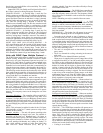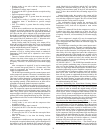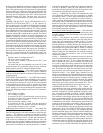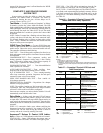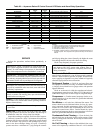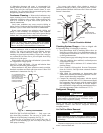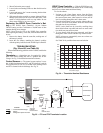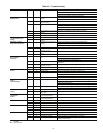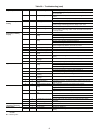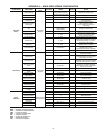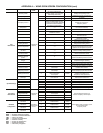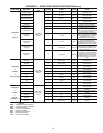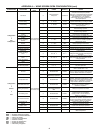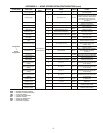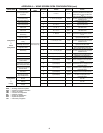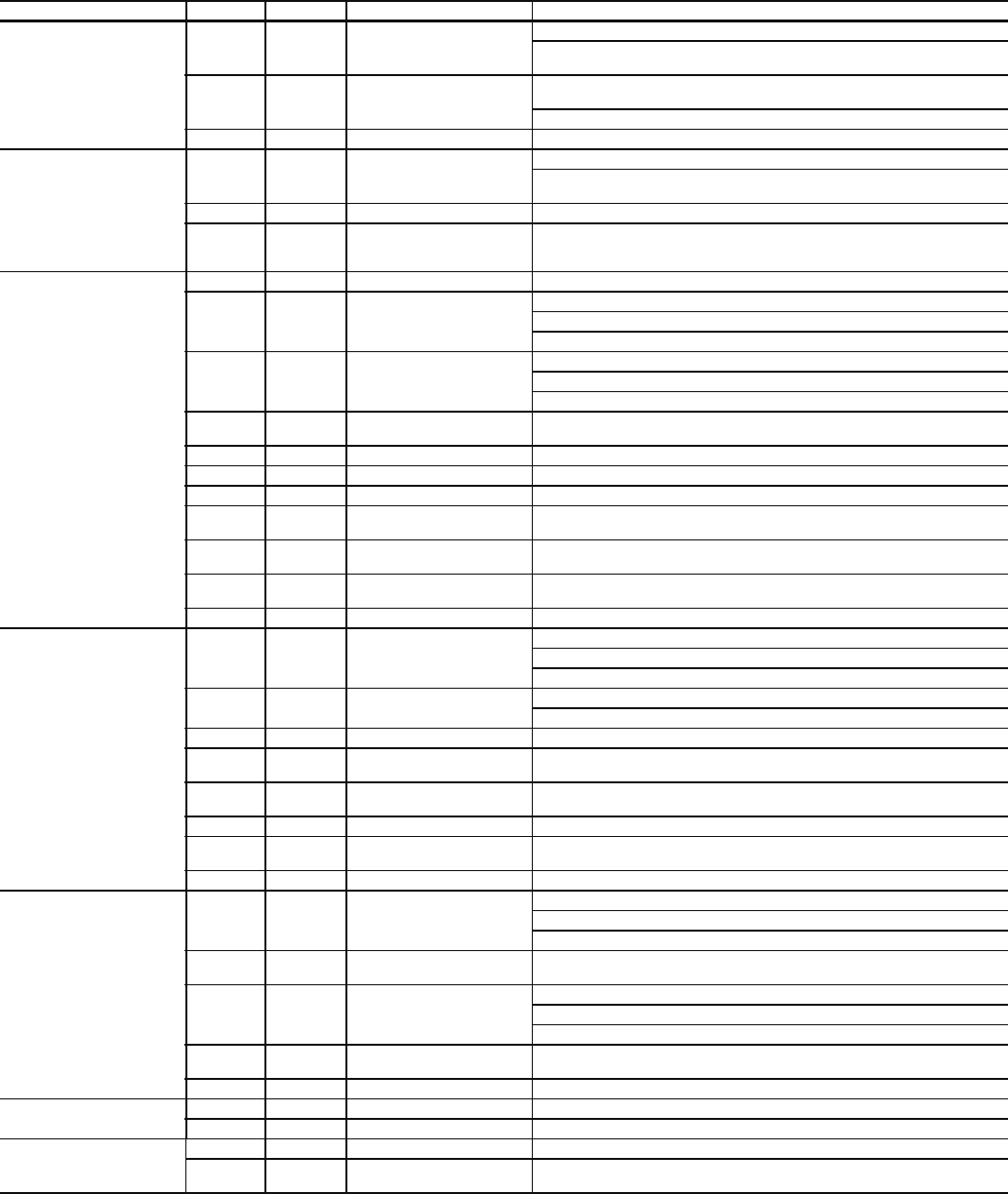
42
Table 29 — Troubleshooting (cont)
LEGEND
RV — Reversing Valve
FAULT HEATING COOLING POSSIBLE CAUSE SOLUTION
Only Compressor Runs X X Thermostat wiring Check G wiring at heat pump. Jumper G and R for fan operation.
Check Y and W wiring at heat pump. Jumper Y and R for compressor oper-
ation in test mode.
X X Fan motor relay Jumper G and R for fan operation. Check for line voltage across BR
contacts.
Check fan power enable relay operation (if present).
X X Fan motor Check for line voltage at motor. Check capacitor.
Unit Does Not Operate in
Cooling
X Reversing valve Set for cooling demand and check 24 VAC on RV coil and at control.
If RV is stuck, run high pressure up by reducing water flow and while
operating engage and disengage RV coil voltage to push valve.
X Thermostat setup Check for 'O' RV setup not 'B'.
X Thermostat wiring Check O wiring at heat pump. Check RV to ensure the valve is changing
over from heating and cooling modes. A 'click' should be heard when the
RV changes modes.
Insufficient Capacity/
Not Cooling or Heating
Properly
X X Dirty filter Replace or clean.
X Reduced or no airflow in
heating
Check for dirty air filter and clean or replace.
Check fan motor operation and airflow restrictions.
External static too high. Check blower Tables 8-11.
X Reduced or no airflow in
cooling
Check for dirty air filter and clean or replace.
Check fan motor operation and airflow restrictions.
External static too high. Check blower Tables 8-11.
X X Leaky ductwork Check supply and return-air temperatures at the unit and at distant duct
registers if significantly different, duct leaks are present.
X X Low refrigerant charge Check superheat and subcooling Tables 16-22.
X X Restricted metering device Check superheat and subcooling Tables 16-22. Replace.
X Defective reversing valve Manually check the four-way valve to ensure all valves are operational.
X X Thermostat improperly
located
Check location and for air drafts behind thermostat.
X X Unit undersized Recheck loads and sizing check sensible cooling load and heat pump
capacity.
X X Scaling in water heat
exchanger
Check for scale (water deposits) and clean if necessary.
X X Inlet water too hot or cold Check load, loop sizing, loop backfill, ground moisture.
High Head Pressure X Reduced or no airflow in
heating
Check for dirty air filter and clean or replace.
Check fan motor operation and airflow restrictions.
External static too high. Check blower Tables 8-11.
X Reduced or no water flow in
cooling
Check pump operation or valve operation/setting.
Check water flow adjust to proper flow rate. See Table 15.
X Inlet water too hot Check load, loop sizing, loop backfill, ground moisture.
X Air temperature out of range
in heating
Bring return-air temperature within design parameters.
X Scaling in water heat
exchanger
Check for scale (water deposits) and clean if necessary.
X X Unit overcharged Check superheat and subcooling. Reweigh in charge.
X X Non-condensables in
system
Evacuate the refrigerant, recharge the system, and then weigh the new
refrigerant charge.
X X Restricted metering device Check superheat and subcooling per Tables 16-22. Replace.
Low Suction Pressure X Reduced water flow in
heating
Check pump operation or water valve operation/setting.
Plugged strainer or filter. Clean or replace.
Check water flow adjust to proper flow rate.
X Water temperature out of
range
Bring water temperature within design parameters.
X Reduced airflow in cooling Check for dirty air filter and clean or replace.
Check fan motor operation and airflow restrictions.
External static too high. Check blower Tables 8-11.
X Air temperature out of range Too much cold vent air. Bring entering air temperature within design
parameters.
X X Insufficient charge Check for refrigerant leaks.
Low Discharge Air
Temperature in Heating
X Too high airflow Check blower Tables 8-11.
X Poor performance See 'Insufficient Capacity'.
High Humidity X Too high airflow Check blower Tables 8-11.
X Unit oversized Recheck loads and sizing check sensible cooling load and heat pump
capacity.



